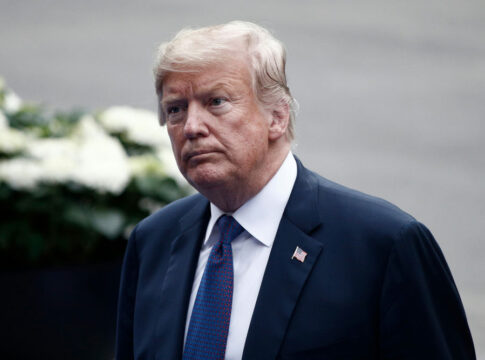In an astonishing turn of events, a Democrat’s tweet attacking Trump over inflation backfired, revealing more about their own economic missteps than intended.
Inflation and Economic Policy: A Heated Debate
The uproar over inflation is nothing new, but its implications in 2025 are particularly contentious. Inflation soared to 2.7% in June 2025, marking the highest level since February. Food prices have been the hardest hit, with eggs experiencing a staggering 27.3% increase year-over-year. This economic burden has left many consumers frustrated as they navigate higher grocery bills. The root causes are multifaceted, involving a combination of tariffs, energy price rebounds, and supply chain adjustments.
Trump’s administration has reintroduced tariffs on Chinese imports, which critics argue have exacerbated inflationary pressures. Businesses are beginning to pass these costs onto consumers, particularly in goods such as furniture and automobiles. The political climate intensifies this issue, with Democrats blaming Republican policies for rising costs, while Republicans point to previous mismanagement under Biden as the true culprit. The debate is a testament to the broader struggle over economic policy and trade.
Political Rhetoric: A Double-Edged Sword
Democrats’ recent attempt to criticize Trump over inflation has sparked significant backlash. Their social media efforts aimed at painting the current administration as the villain in this economic saga have not resonated as intended. Instead, the backlash has highlighted the complexity of the issue, underscoring that inflation is not solely a result of Trump’s policies. While inflation is indeed lower than during Biden’s peak, this fact has not stopped Democrats from leveraging it as a political tool.
Republicans have been quick to remind the public of the economic turmoil faced during Biden’s tenure. They emphasize that inflation, although rising, is not as severe as it was under his administration. This political tug-of-war over economic data illustrates the lengths to which parties will go to sway public opinion. It also reveals a broader frustration among voters who are caught in the crossfire of partisan battles, yearning for practical solutions to real-world problems.
The Consumer Perspective: Unyielding Pressure
Consumers are at the heart of this inflationary storm, feeling the impact of rising costs in their daily lives. Staples such as eggs and beef have become significantly more expensive, forcing households to adjust their budgets. The pressure is particularly acute for lower-income families who spend a larger portion of their income on essentials. Retailers face the challenge of balancing higher supply chain costs with the need to maintain customer loyalty. As they navigate this tightrope, consumers are seeking relief wherever possible, from discount stores to private-label products.
Political parties have seized upon consumer dissatisfaction as a rallying point. Each side claims to champion the interests of the working and middle classes, yet actionable solutions remain elusive. The Federal Reserve’s role in this scenario cannot be overlooked. As they consider further interest rate hikes to temper inflation, the potential for slower economic growth looms on the horizon. This delicate balance between controlling inflation and fostering economic stability is a critical challenge facing policymakers.
Sources:
Federal Reserve Bank of Cleveland

